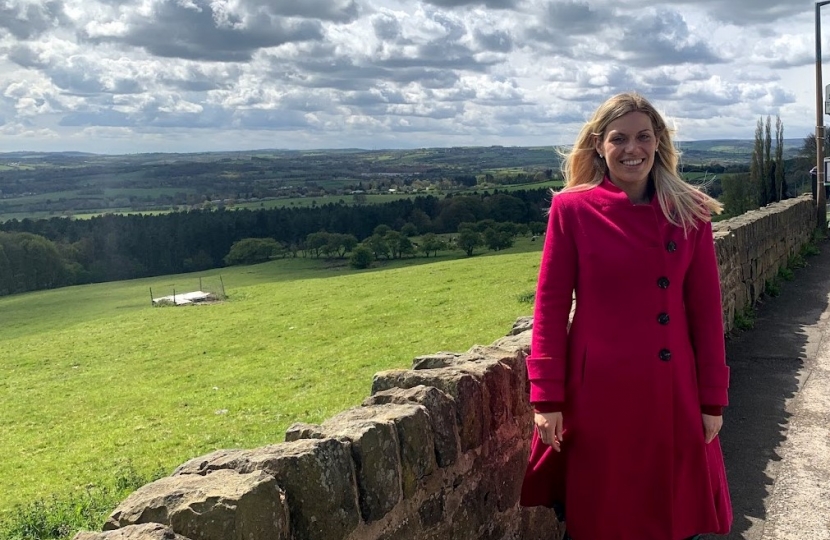
What is a Local Plan?
Local councils in England are responsible for the majority of planning issues in their area. That means they set limits on and make decisions about the building of homes, commercial properties, public services, and associated infrastructure.
In order to guide this process, and to give local communities a say in planning, councils are required by law to produce a Local Plan.
The Local Plan is presented as a document which sets out the planning strategy and priorities for the area, and covers issues such as where new housing should be built, what type of homes are needed, and what additional infrastructure will be required to accommodate those homes. It can also designate land for different purposes, such as residential or industrial, and can give protection from development to open and green spaces.
A Local Plan is made up of what are known as 'planning policies'. These are clear directions and guidelines about the sort of development that is allowed in an area, the type of homes that are appropriate, what conditions must be met in terms of style and size, how new buildings fit with existing communities and green spaces, and what the priorities are for future development. These policies are in place for as long as the Local Plan is active, but a Local Plan is only designed to last for a set number of years.
The Local Plan sets a clear strategy for the council area, and for the different communities that make up that local authority. Rather than having to take a fragmented approach to each individual plot of land, a Local Plan gives a structure across the entirety of a city or borough.
Why do we need one?
An up-to-date Local Plan is the main way that councils set their planning policies. Previous planning policy documents that have expired do not carry the same weight when it comes to deciding the outcome of a planning application. Without an up-to-date Local Plan, councils can lack the policies they need to prevent inappropriate or damaging development in their area.
It’s also important that local people are given the means to have their say in the future development of their communities, and this is best done through the Local Plan consultation process.
Before a Local Plan is drafted, the council must consult the community on what they want to see included in the Plan. Once a draft has been produced, there are then public hearings and a period for comments to be submitted. This gives people a chance to give direction to the Plan, and to object to any parts of it they do not feel are appropriate. Without this consultation, local people have no real way to give their views on the strategic direction of development in their communities.
Local Plans also open up the possibility of developing a Neighbourhood Plan in a community that does not cover an entire council area. This might be a small town or village, or a suburb or group of suburbs that share strong links. A Neighbourhood Plan must fit with the overall aims of the Local Plan that it sits below, but it gives smaller communities the chance to tailor planning policies to their specific needs. Without a Local Plan it is difficult for smaller communities to make their voices heard in planning decisions that affect their areas.
We have recently seen in Stocksbridge the dangers of not having a Local Plan in place. Although the community strongly objected to the building of houses on Hollin Busk, Sheffield City Council has no Local Plan in place that would have allowed them to designate this area as protected open space. The lack of a Local Plan also meant the Council did not have the up-to-date planning policies in place that would have allowed them to reject the application as inappropriate for the area. This was the key issue highlighted by the Planning Inspector in his decision to grant outline planning approval for 84 homes on Hollin Busk.
What is the process for delivering a Local Plan?
Councils have a legal obligation to put together a Local Plan, and to include the public in the process. This will include an initial public consultation on a range of issues and options that the council considers important for the development of the Plan. It also gives people the chance to raise additional issues that they think need to be considered.
After this initial consultation, the council will put together a draft plan that takes into account the comments that have been received from the public. This draft plan is then opened up to another consultation, when the public have the chance to support or object to elements of the draft plan.
A final draft will then be submitted to the Government, who will appoint an Independent Planning Inspector. The Inspector's job is to make sure that the Plan is coherent and meets all its legal obligations, and that it includes an achievable path to sustainable future development in the area.
Once this has been approved, the council can then adopt the Local Plan and the planning policies it includes will come into effect.
How do I get involved in delivering a Local Plan for our area?
Everyone who lives or works in an area has the right to take part in the Local Plan consultation process. Different local authorities are at different stages, so the opportunities to get involved will depend on where you live.
Barnsley Metropolitan Borough Council adopted its Local Plan in January 2019. Since then, Neighbourhood Plans have been approved for Cawthorne, Oxspring, and Penistone. Silkstone Parish Council has recently started developing its Neighbourhood Plan.
Sheffield City Council does not yet have a Local Plan, it is however in the early stages of developing one. Further consultation is due to take place over the coming months and years.



